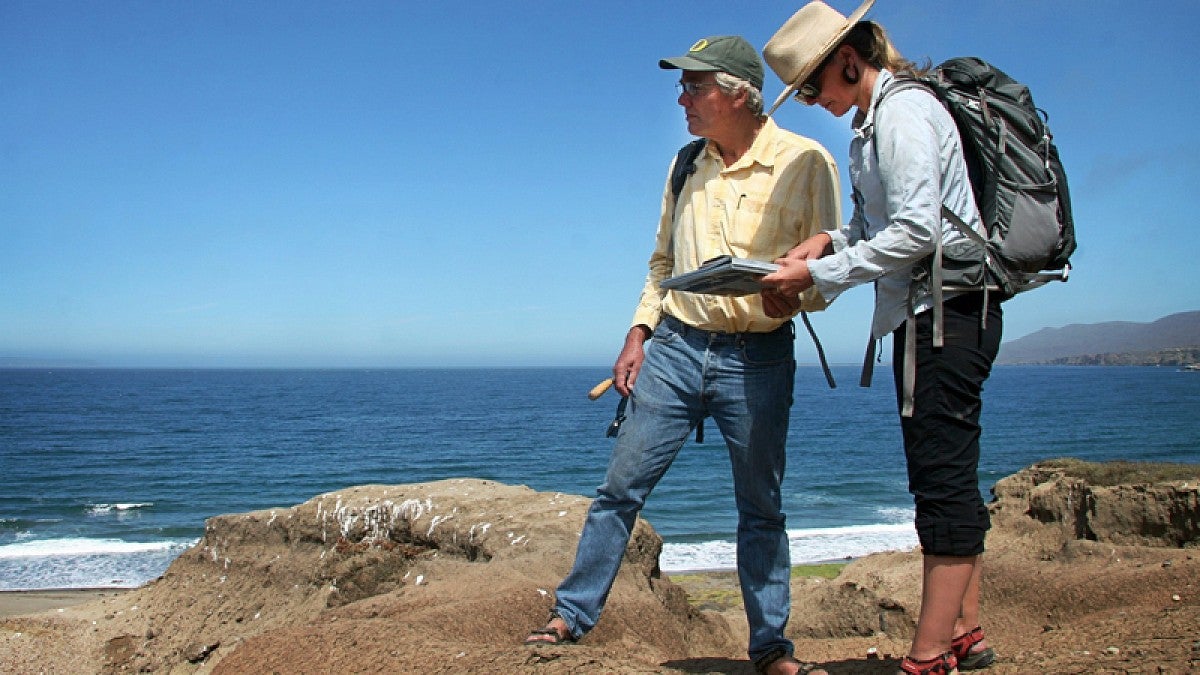For many people, a visit to the Pacific Coast is all about recreation. Not so for UO archaeologist Jon Erlandson, who’s conducted research at coastal sites for almost four decades.
His years of work have paid off. Erlandson, honored with a special achievement award from the Society for California Archaeology, has helped change the way we think about the peopling of the Americas.
Erlandson, who holds a Philip H. Knight Professorship and serves as the executive director of the Museum of Natural and Cultural History, is internationally known for his “kelp highway” hypothesis. That theory challenges the long-held view that the first Americans walked across the Bering land bridge and points to evidence that the earliest migrations were by maritime people who followed a Pacific Rim route from Northeast Asia to California and South America.
“Jon is the primary figure who brought this coastal migration theory into the mainstream,” said Torben Rick, curator of North American archaeology at the Smithsonian National Museum of Natural History, who along with San Diego State University archaeologist Todd Braje nominated Erlandson for the 2017 Martin Baumhoff Special Achievement Award.
The award was presented at the Society for California Archaeology’s annual conference at Yosemite’s Tenaya Lodge. It recognizes Erlandson’s contributions to California archaeology and his pivotal role in shaping prevailing theories about the first Americans.
It also recognizes his research on the historical ecology of California’s Channel Islands, which has revealed that human-driven environmental change began thousands of years ago — much earlier than commonly thought. Erlandson has drawn from that research to help the Nature Conservancy and the National Park Service develop resource management plans for the Channel Islands.
“Jon’s record of research in California archaeology is truly second to none,” Rick said. “This well-deserved award honors his excellent scholarship, as well as his many years of working with California’s Native American communities to understand, protect and preserve the state’s human and environmental history.”
Erlandson’s contributions, Braje said, include a long record of mentoring others and promoting greater diversity within the discipline. “He has been an amazing teacher to the next generation of archaeologists and anthropologists, including many women, Native American and Latino scholars.”
The Society for California Archaeology is a nonprofit scientific and educational organization dedicated to research, understanding, interpretation and conservation of California’s heritage. It is one of the largest archaeological societies in the country.
Society president Jelmer Eerkens said that Erlandson is a champion of the archaeological record in California. “He is recognized internationally for his strong ecological and scientific approach to reconstructing and understanding the past. His passion and leadership in archaeology have been an inspiration to a generation of students. The Society for California Archaeology is proud to recognize him with the 2017 Martin A. Baumhoff award.”
—By Kristin Strommer, Museum of Natural and Cultural History


